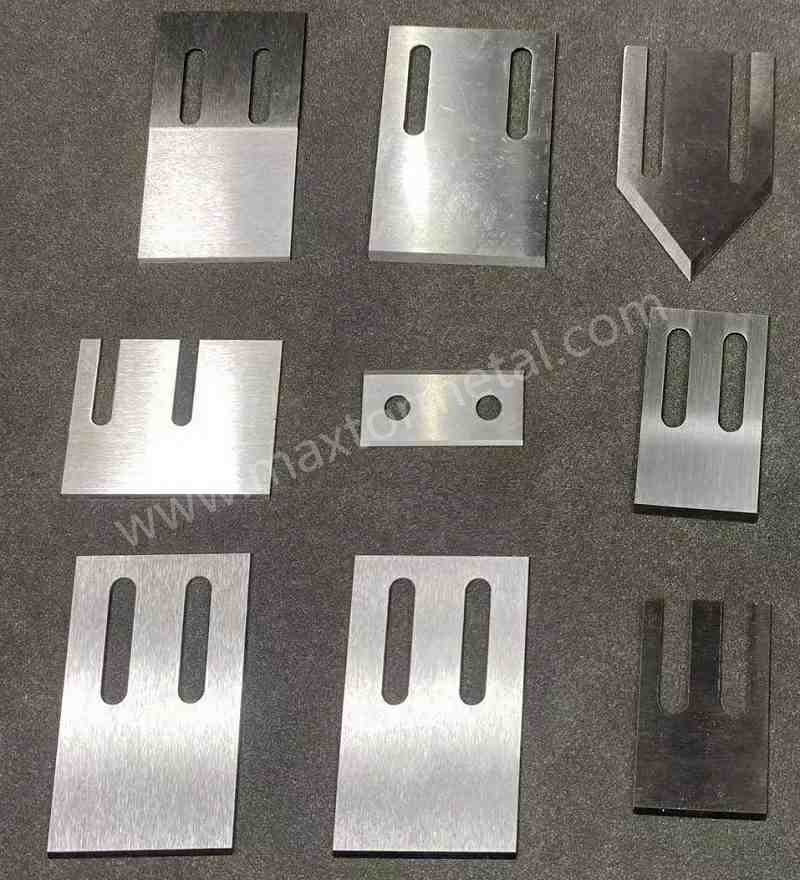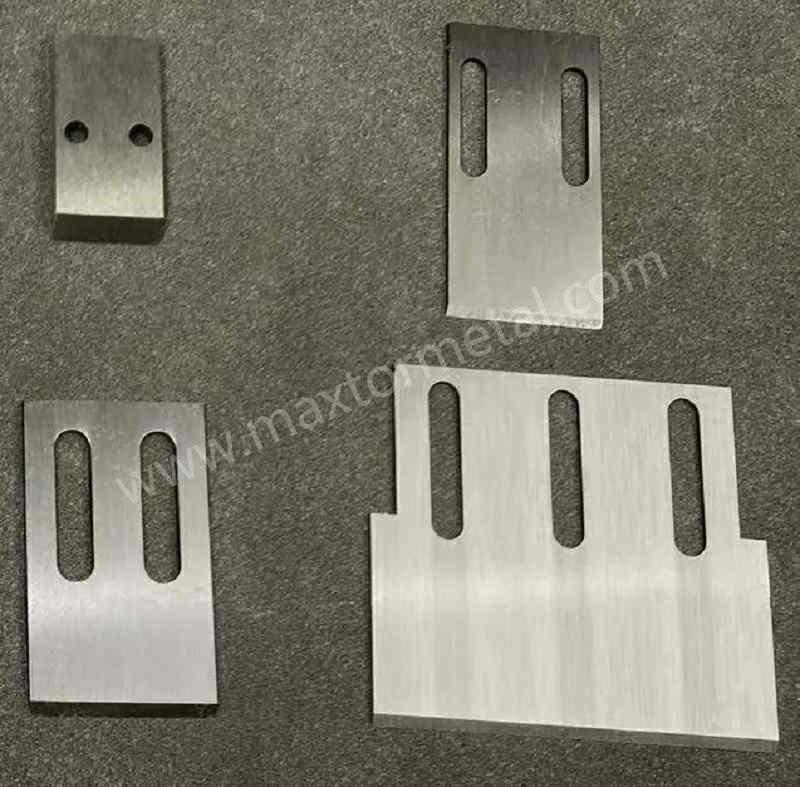| Autres Noms | Lame de granulateur en plastique, Couteau de coupe de granulés en plastique, Lame de granulateur en plastique, Couteau de granulation en plastique |
|---|---|
| Lieu d'Origine | Chine |
| Application | Industrie du recyclage du plastique |
| Matériau | Sk2,HSS,M2,SKD11 |
| Numéro de Modèle | CB-PC |
| Service OEM | Disponible |
| Conditions de Paiement | L/C, T/T, Western Union |
| Emballage | Boîte en Carton, Caisses en Bois |
| Délai de Livraison | 7-20 Jours |
Partager sur :
Lames de granulateur en plastique, également connu sous le nom de lames de granulateur, couteaux de granulation, ou couteaux de rotor et couteaux de stator (selon leur position dans le granulateur) sont des outils de coupe essentiels utilisés dans les machines de granulation du plastique. Ces machines réduisent les gros morceaux de plastique en petites pastilles ou granulés uniformes, qui constituent la principale matière première pour la fabrication de divers produits en plastique. Lames de granulateur en plastique sont spécifiquement conçus pour couper efficacement et proprement différents types de matériaux plastiques en ces tailles de granulés cohérentes.
Lames de granulateur en plastique sont essentiels aux industries du recyclage et de la fabrication du plastique. Leurs principales applications comprennent :
Les matériaux utilisés pour lames de granulateur en plastique Ils doivent être très résistants à l'usure pour supporter l'abrasion de certains plastiques et charges, ainsi que le fonctionnement continu à grande vitesse des machines de granulation. Les matériaux courants comprennent :
La dureté de lames de granulateur en plastique La dureté varie généralement de 52 à 65 HRC, selon le matériau et le type de plastique traité. Un traitement thermique approprié est essentiel pour obtenir un équilibre optimal entre dureté et ténacité. Des revêtements tels que le chromage ou le nitrure de titane (TiN) peuvent être appliqués pour améliorer la dureté de surface, réduire les frottements et améliorer la résistance à la corrosion.
Lames de granulateur en plastique Les granulés se présentent sous différentes formes et configurations, selon le type de machine de granulation (granulateurs à brins, granulateurs sous-marins, granulateurs à matrice) et la taille et la forme des granulés souhaitées. Les formes courantes sont :
Le principe de fonctionnement implique la rotation lames de granulateur en plastique (couteaux à rotor ou à mouche) passant à proximité de l'appareil stationnaire couteaux de stator ou la face de la filière, coupant les brins continus ou la matière fondue extrudée en petits morceaux. L'espace libre entre les couteaux du rotor et du stator est essentiel pour une coupe nette et éviter les bavures ou les arrachements de matière. La vitesse de rotation et l'avance du plastique déterminent la taille et la forme des granulés obtenus. Différentes géométries de lames et configurations de coupe sont utilisées pour optimiser la qualité des granulés et l'efficacité de production pour différents types de plastiques et exigences de cadence.
Profitez de la commodité d'une importation fluide. Du transport au dédouanement, nous gérons l'ensemble du processus. Il vous suffit de payer la TVA et d'attendre l'arrivée de vos marchandises.
Nous avons vu nos lames exceller dans d'innombrables applications et sommes prêts pour tout projet que vous nous confierez. Attendez-vous à la précision, à la durabilité et à des prix compétitifs inégalés.
Que vous fournissiez des dessins, des croquis ou des échantillons, nous pouvons concevoir et fabriquer pour vous. Nous avons également la capacité d'aider à modifier les conceptions et spécifications existantes pour améliorer presque toutes les applications d'outillage industriel. Veuillez contacter notre équipe de vente dédiée pour discuter de vos besoins spécifiques.
Une série de tests et d'inspections sont effectués pour contrôler la qualité, incluant l'inspection du premier article, l'inspection des matériaux entrants et les matériaux certifiés, l'inspection qualité en cours de production, et l'inspection qualité finale.
Que vous soyez un importateur, un distributeur, un grossiste ou un utilisateur final, nous vous accueillons. Bénéficiez de faibles quantités minimales de commande (MOQ), de demandes sans tracas et d'une plus grande liberté d'achat.
Considérez-nous comme votre moniteur exclusif. Nous vous fournirons régulièrement des mises à jour sur chaque étape cruciale de votre chaîne de production. Quelle que soit la distance, vous aurez un aperçu en temps réel de l'avancement de votre produit.





Nanjing Metal Industrial CO., Limited
Mingjue Industrial Park, Lishui, Nanjing, Jiangsu, China
Restez informé de nos dernières actualités.